 |
Construction Safety & Prevention Program: CSIP Introduction |
0.25 |
CSIP Introduction is part of a twelve-part construction safety and prevention program. This course introduces construction safety standards and preventing injury on the job. This course will also cover the structure of CSIP programs and OSHA considerations and rules. |
 |
Construction Hazards |
0.50 |
This course covers the basics when discussing construction hazards you may see daily when working on a construction site. Preventative measures for falls and falling objects, electrical work, as well as excavations will be discussed throughout. |
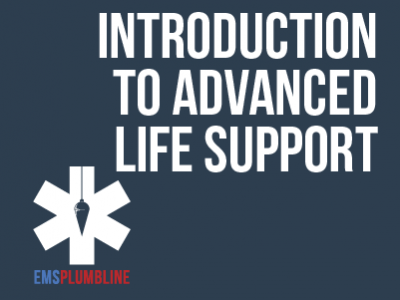 |
Constructing: Sepsis for Paramedics, Part 2—Fluid Resuscitation |
1.00 |
If you think caring for sepsis patients is not an interesting topic, you might want to think again. Medical Directors Jeremy Cushman and Christopher Galton, give Paramedic Hoskins a passionate description of proper patient care. Fluids are important and this is why. Final Exam: This multiple choice exam is designed to test your knowledge of the material you just reviewed. You have two attempts to gain an 80% or higher on this exam. Please take your time and answer each question carefully. |
 |
Constructing: Sepsis for Paramedics, Part 1—Overview |
1.00 |
Paramedic Michael Hoskins does a fantastic job discussing the gradual onset of this disease process with Medical Directors Jeremy Cushman and Christopher Galton. In this first of three segments, you will learn how we should look for sepsis and what questions every paramedic should ask. Final Exam: This multiple choice exam is designed to test your knowledge of the material you just reviewed. You have two attempts to gain an 80% or higher on this exam. Please take your time and answer each question carefully. |
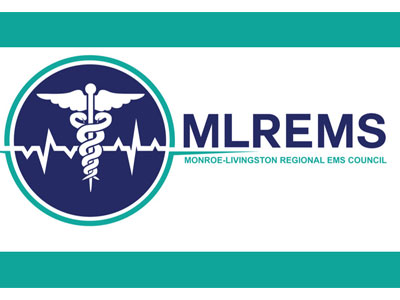 |
Constructing: FAST-ED Overview |
1.00 |
Professor of Emergency Medicine and Chief of the Division of Prehospital Medicine at the University of Rochester, Jeremy Cushman, brings his experienced team of prehospital providers together to discuss the benefits of Field Assessment Stroke Triage for Emergency Destination (FAST-ED). You will want to take notes and download your favorite smartphone app. This lesson is sure to spark an excellent discussion with your training officers and/or medical director(s).
Final Exam: This multiple choice exam is designed to test your knowledge of the material you just reviewed. You have two attempts to gain an 80% or higher on this exam. Please utilize the smartphone app of your choosing and take your time and answer each question carefully. |
 |
Constructing: Airway Essentials—Part 8 |
0.50 |
These eight Airway Essentials Lessons conclude with Dr. Christopher Galton's thoughts on what should be done after the ALS airway has been established. It is here that ideas are offered on what paramedics should read and learn more about to improve their practice. Grab a pencil and a notepad and get ready to graduate from the EMS Plumbline "Introduction to ALS" to the "Paramedicine" Division. Final Exam: This multiple choice exam is designed to test your knowledge of the material you just reviewed. You have two attempts to gain an 80% or higher on this exam. Please take your time and answer each question carefully. |
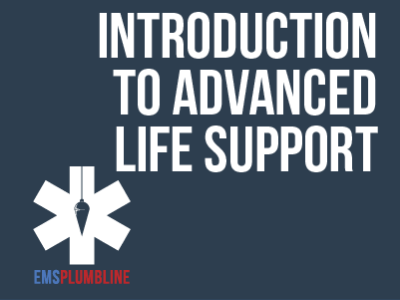 |
Constructing: Airway Essentials—Part 7 |
0.50 |
Every paramedic has ideas on what is needed to obtain a good view while instrumenting the airway. If this lesson does not create an educated discussion on the topic, nothing will. Take the opportunity to imagine yourself in the classroom and identify what you would do.Final Exam: This multiple choice exam is designed to test your knowledge of the material you just reviewed. You have two attempts to gain an 80% or higher on this exam. Please take your time and answer each question carefully. |
 |
Constructing: Airway Essentials—Part 6 |
0.50 |
This lesson on how to instrument the airway will give you fantastic ideas on how to create your next lab session. Take note as some pearls are offered by Dr. Christopher Galton, on how to assess and manage ALS airway procedures. Final Exam: This multiple choice exam is designed to test your knowledge of the material you just reviewed. You have two attempts to gain an 80% or higher on this exam. Please take your time and answer each question carefully. |
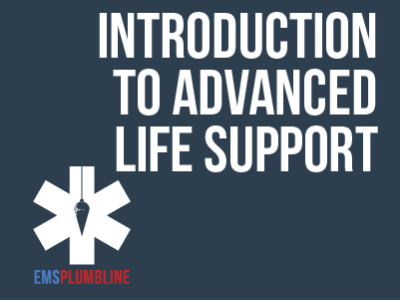 |
Constructing: Airway Essentials—Part 5 |
0.50 |
Most paramedics will tell you that online training will not allow you the opportunity to learn how to perform a psychomotor skill such as intubation. We agree to a point. You will find that the discussion with Dr. Christopher Galton, will likely have you thinking differently the next time you intubate a patient. Chances are your success rates will improve. Final Exam: This multiple choice exam is designed to test your knowledge of the material you just reviewed. You have two attempts to gain an 80% or higher on this exam. Please take your time and answer each question carefully. |
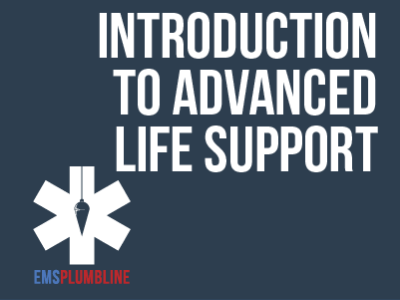 |
Constructing: Airway Essentials—Part 4 |
1.00 |
This lesson explores a few BLS concepts that every ALS provider should know. You will appreciate the back-to-basics approach Dr. Christopher Galton, uses to ensure adequate ventilation. Final Exam:This multiple choice exam is designed to test your knowledge of the material you just reviewed. You have two attempts to gain an 80% or higher on this exam. Please take your time and answer each question carefully. |
 |
Constructing: Airway Essentials—Part 3 |
1.00 |
Knowing why you are doing what you are doing will almost always produce a better result. In this case, Dr. Christopher Galton explains why we ventilate at the rates and the volumes we do. This insightful discussion will offer ideas on how to use the ventilation tools that we encounter every day. Final Exam: This multiple choice exam is designed to test your knowledge of the material you just reviewed. You have two attempts to gain an 80% or higher on this exam. Please take your time and answer each question carefully. |
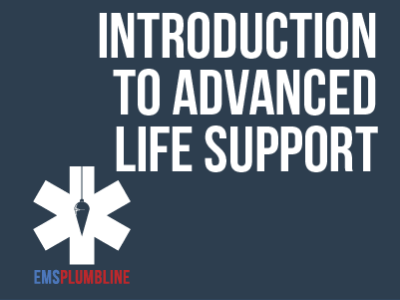 |
Constructing: Airway Essentials—Part 2 |
0.50 |
Most paramedics will remember walking around town during their original paramedic school and deciding which patients would be a "tough tube." If that describes you when you first started, you will appreciate this brief review. Dr. Christopher Galton takes the time to takes the time to give a memorable examples of the mnemonics LEMON and BONES, which prove to be a fantastic teaching tools. We think you will enjoy the illustrations that allow you to remember these important evaluations. Final Exam: This multiple choice exam is designed to test your knowledge of the material you just reviewed. You have two attempts to gain an 80% or higher on this exam. Please take your time and answer each question carefully.
|
 |
Constructing: Airway Essentials—Part 1 |
0.50 |
We think that you will appreciate the opportunity to review the essential aspects of Airway Assessment and Management with one of the most dedicated paramedics that you can find: Chris Galton. As a Transplant Anesthesiologist and a Paramedic, Galton has spent countless hours learning to assess and maintain some of the most difficult patient airways out there. Instead of going to bed after staying up all night on a liver transplant case, Galton showed some paramedic-style grit and shared some knowledge with Rachel and Rich (two experienced paramedics). The cameras were rolling and you will want to see what they spoke about. |
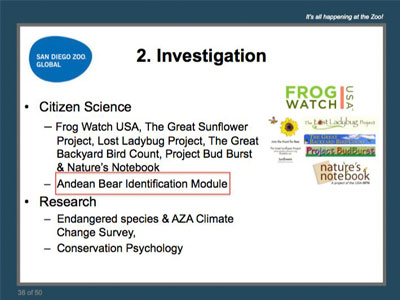 |
Conservation Education: A Brief History, Current Challenges and Future Directions |
1.00 |
The field of conservation education has experienced significant paradigm shifts since its said-to-be inception in the 1960's. While many advances have been made in the field of conservation education, many challenges and varying viewpoints remain. This is especially true as many conservation related issues are underpinned by political, economic and cultural opinions and allegiances. Using the literature and projects underway at the San Diego Zoo Institute for Conservation Research and beyond, we will discuss these changes and challenges, while exploring what the future of conservation education may have in store. |
 |
Connection Planning in Long-Term Care |
1.00 |
This module includes training for staff and providers in the importance of social connection and practical strategies learners can use to promote social connectedness in long-term care. The module explains how to implement Connection Planning, a brief, person-centered behavioral intervention for developing resident care plans that address social connection. Connection Planning includes evidence-informed, practical strategies to promote meaningful social connection among residents in long-term care. |
 |
Connecting Volunteers in the 21st Century |
1.00 |
Feeling bogged down by repetitive communication? Strapped for time and resources? Ensuring volunteers have all the training materials they need at their fingertips can be an exceptionally daunting task, especially for those with a healthy fear of technology. Yet the time savings involved can be astronomical, both in training time and resources. Learn how the San Diego Zoo tackled the challenge, launching a new Volunteer Connection web site on which to post a wide variety of training materials that volunteers can access from the comfort of their own homes. Investigate how this unique site has become a safe social network for San Diego Zoo Global Volunteers. We will dive right into the challenges, techniques, questions and concerns this site has posed for us and how we've addressed each. Experience the site's functionality, and learn how you can start up a portal site like this for your volunteers too!! |
 |
Connecticut Sexual Harassment Prevention Training |
2.00 |
This 2 hour Connecticut Sexual Harassment Prevention Training is brought to you by the Connecticut Commission on Human Rights and Opportunities.
Thank you to the Connecticut Commission on Human Rights and Opportunities' for allowing us to use their materials from the Sexual Harassment Prevention Training course. |
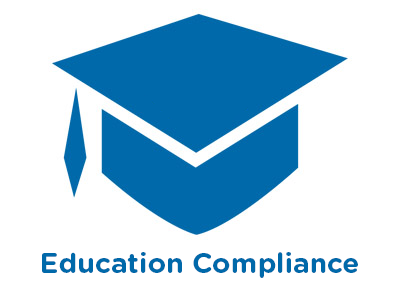 |
Conflicts of Interest (Corrections) |
1.00 |
A conflict of interest is a clash between personal interests and work requirements. It occurs when an individual’s personal interests, whether financial, professional, or social, including those of family and friends, compromise his or her judgment, decision, or actions in the workplace. Conflicts of interest matter because they compromise the quality of an employee’s decision-making, which reflects on higher education institutions. |
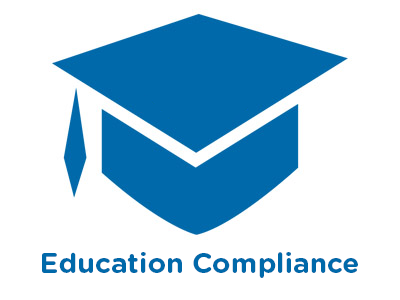 |
Conflicts of Interest |
1.00 |
A conflict of interest is a clash between personal interests and work requirements. It occurs when an individual’s personal interests, whether financial, professional, or social, including those of family and friends, compromise his or her judgment, decision, or actions in the workplace. Conflicts of interest matter because they compromise the quality of an employee’s decision-making, which reflects on higher education institutions. |
 |
Conflict and Communication: Why Can't We Be Friends? |
1.00 |
Conflict occurs when we are in relationship with others. In fact, the hallmark of a healthy relationship is not the absence of conflict, but the ability to successfully resolve it. Unfortunately, resolving conflict is not a skill many of us were taught. We'll explore the fundamental causes of conflict and the dynamics that can escalate conflict. Finally, we’ll cover the tools necessary to navigate conflict successfully, including effective communication strategies. |
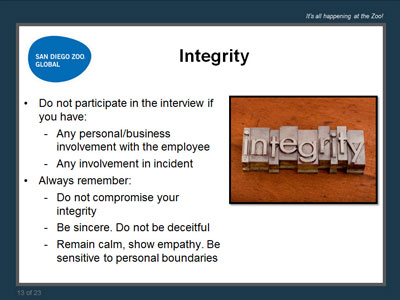 |
Conducting World Class Employee Investigations |
1.00 |
Employment litigation and claims in recent years have cost employers billions of dollars. Employers must find ways to reduce their vulnerability to such claims. Often times, employer liability hinges on the quality of the company's investigation into complaints of discrimination, harassment, or other claims of workplace misconduct. In fact, an important consideration in an employee's decision to ultimately file a lawsuit or claim is whether the employer conducted an effective workplace investigation. Join San Diego Zoo Global's Associate Director of Human Resources for a dynamic and informative workshop on how to conduct effective workplace investigations that will protect your organization and reduce potential litigation costs. This comprehensive webinar will include a discussion about:
- A step-by-step approach on how to plan and conduct workplace investigations
- A practical demonstration of effective interview techniques
- How to anticipate and respond to legal and practical issues that frequently arise during the course of investigations
- Preparing bullet-proof documentation to support the investigation findings and recommended actions |
 |
Conducting Meetings: Managing Meetings (Instructor Guide) |
0.67 |
In this course you will learn to: identify the types of meeting leaders and the characteristics of an effective meeting leader. identify the process to follow when making decisions in a meeting, and explain how to identify and minimize group think in meetings.
This Instructor's Edition of this course includes notes and suggestions to assist you in presenting the material, whether in an in-person classroom setting or as an instructor-led online or distance-learning course. It also provides you with the answers to questions found in mid-lesson activities, as well as in the quiz that concludes the course. |
 |
Conducting Meetings: Managing Meetings |
0.67 |
In this course you will learn to: identify the types of meeting leaders and the characteristics of an effective meeting leader. identify the process to follow when making decisions in a meeting, and explain how to identify and minimize group think in meetings. |
 |
Conducting Meetings: Listening Effectively and Asking Questions (Instructor Guide) |
0.50 |
To communicate effectively during a meeting, you have to listen and ask appropriate questions. Listening and questioning are two interdependent skills that will help you create a positive climate, develop positive dialog, and achieve the group’s goals.
By listening and questioning effectively, you’ll actively engage yourself and others in the meeting. Actively participating will enable you to quickly identify and address other participants’ thoughts, ideas, and concerns. Facilitating communication in this manner will foster individual and group success.
In this course you will learn to: identify the main causes of conflict, the ways to resolve conflict in meetings, and the common difficult personality types in meetings, and identify the characteristics of a positive and negative climate, and the steps to build a positive climate when communicating.
This Instructor's Edition of this course includes notes and suggestions to assist you in presenting the material, whether in an in-person classroom setting, or as an instructor-led online or distance-learning course. It also provides you with the answers to questions found in mid-lesson activities, as well as in the quiz that concludes the course. |
 |
Conducting Meetings: Listening Effectively and Asking Questions |
0.50 |
To communicate effectively during a meeting, you have to listen and ask appropriate questions. Listening and questioning are two interdependent skills that will help you create a positive climate, develop positive dialog, and achieve the group’s goals.
By listening and questioning effectively, you’ll actively engage yourself and others in the meeting. Actively participating will enable you to quickly identify and address other participants’ thoughts, ideas, and concerns. Facilitating communication in this manner will foster individual and group success.
In this course you will learn to: identify the main causes of conflict, the ways to resolve conflict in meetings, and the common difficult personality types in meetings, and identify the characteristics of a positive and negative climate, and the steps to build a positive climate when communicating. |


























